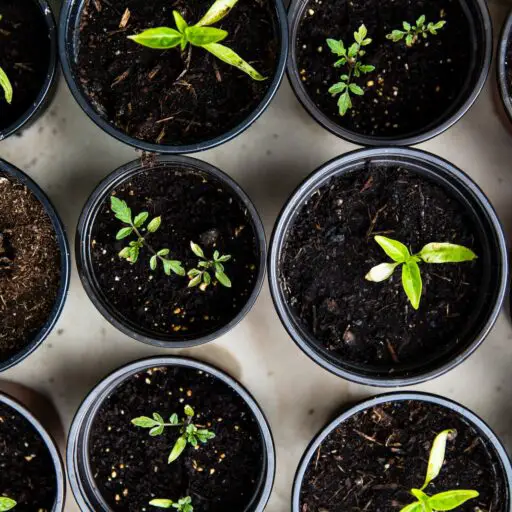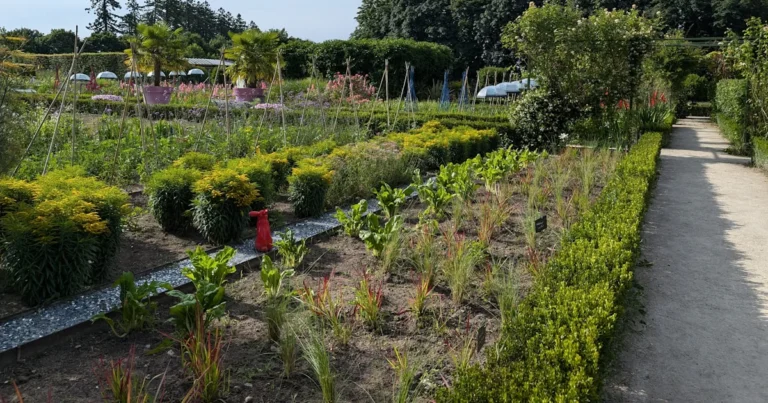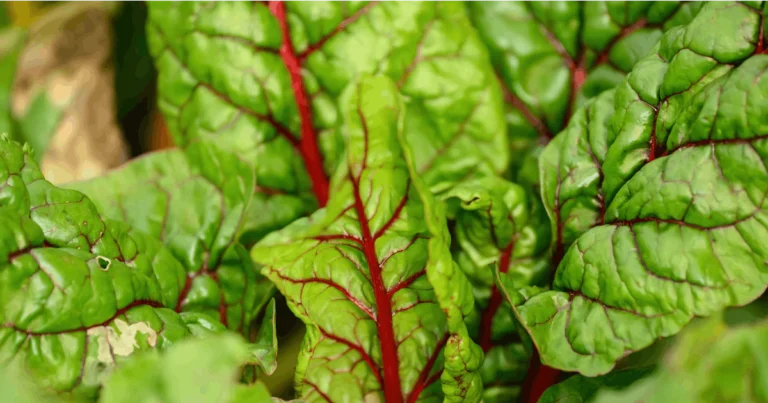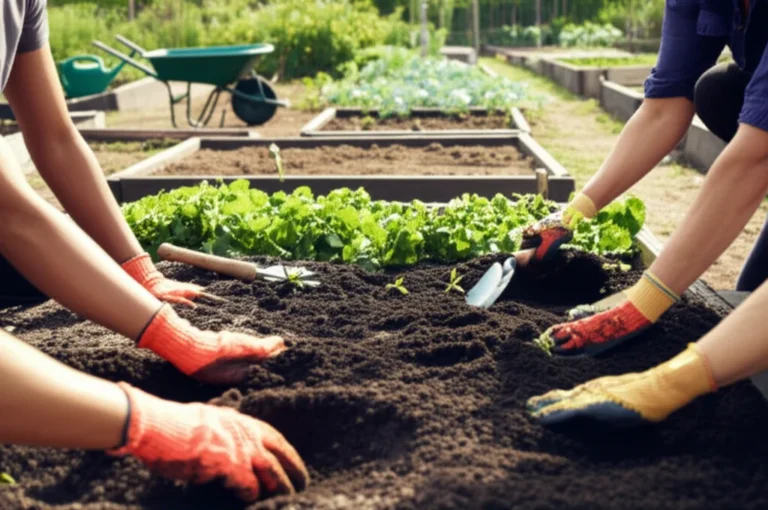Support our educational content for free when you purchase through links on our site. Learn more
Imagine a patch of land in your neighborhood transforming into a buzzing hub of laughter, shared stories, and vibrant greenery. That’s the magic of community gardens—places where people don’t just grow plants, but friendships and a stronger sense of belonging. Did you know that community gardens can reduce stress, improve mental health, and even boost local property values? 🌿 But how exactly do you turn a simple garden into a thriving social oasis? That’s where our 10 inspiring community garden ideas come in, packed with tips from the gardening pros at Community Gardening™ to help you cultivate connection, creativity, and community spirit in 2025 and beyond.
From hosting seed swaps and building cob ovens to designing inclusive spaces and leveraging technology, this guide covers every angle to help you grow together—literally and figuratively. Ready to dig in and discover how your garden can become the heart of your neighborhood? Let’s get started!
Key Takeaways
- Community gardens foster social bonds, mental well-being, and neighborhood pride through shared activities and green spaces.
- Top 10 creative ideas include seed swaps, potlucks, composting systems, art installations, and intergenerational gardening areas.
- Inclusivity matters: Designing accessible, culturally diverse gardens ensures everyone can participate and feel welcome.
- Technology and sustainable practices amplify community engagement and environmental impact.
- Overcoming challenges with clear communication and governance keeps your garden thriving.
Ready to gear up? Check out our recommended raised garden beds, composters, and gardening tools to kickstart your community garden journey:
- Raised Garden Beds: Greenes Fence | Best Choice Products
- Composting Bins: FCMP Outdoor IM4000 | Envirocycle
- Gardening Tools: Fiskars Garden Tool Set | Corona Garden Tools
Table of Contents
- Quick Tips and Facts for Thriving Community Gardens 🌱
- Rooting Together: The Inspiring History and Evolution of Community Gardens 🌿
- The Power of Community Gardens: How Green Spaces Cultivate Connection and Joy 🌼
- 1. Top 10 Community Garden Ideas to Bring People Together 🤝
- 2. Designing Inclusive Garden Spaces: Accessibility and Diversity in Community Gardening ♿🌍
- 3. Growing Social Bonds: Events and Activities That Spark Community Spirit 🎉
- 4. Leveraging Technology: Apps and Tools to Connect Gardeners Digitally 📱
- 5. Sustainable Gardening Practices That Unite and Inspire 🌎
- 6. Overcoming Challenges: Conflict Resolution and Garden Management Tips 🛠️
- 7. Success Stories: Real-Life Community Gardens That Changed Neighborhoods 🌟
- 8. Funding and Resources: How to Support Your Community Garden Project 💰
- Conclusion: Cultivating Community, One Garden at a Time 🌻
- Recommended Links for Community Garden Enthusiasts 🔗
- FAQ: Your Burning Questions About Community Gardens Answered ❓
- Reference Links: Trusted Sources to Dig Deeper 📚
Quick Tips and Facts for Thriving Community Gardens 🌱
Want to skip to the good stuff? Here are some quick tips and interesting facts about community gardens to whet your appetite:
- Start Small, Dream Big: Don’t feel overwhelmed! What is the purpose of a community garden? Begin with a few raised beds or a small plot, and let your garden grow organically with community involvement.
- Diversity is Key: Plant a variety of crops to attract pollinators, deter pests, and keep the soil healthy. Plus, a diverse garden is a more visually appealing and welcoming space!
- Community = Collaboration: Hold regular meetings, potlucks, or workshops to foster a sense of shared ownership and responsibility. Remember, a community garden thrives on the energy and ideas of everyone involved.
- Think Outside the Plot: Get creative with your space! Integrate art installations, build a cob oven for communal pizza nights, or create a “Little Free Library” to encourage sharing.
- Fun Fact: Did you know that community gardening can reduce stress, improve mental well-being, and even boost property values? Now that’s what we call a win-win!
Rooting Together: The Inspiring History and Evolution of Community Gardens 🌿

Community gardens, far from being a recent trend, have deep roots in our collective history. Let’s dig into their fascinating past:
- Ancient Origins: The concept of communal gardening can be traced back to ancient civilizations. From the Aztec “chinampas” (floating gardens) to the terraced gardens of Machu Picchu, communities have long recognized the power of shared cultivation.
- Industrial Revolution and the Rise of Allotment Gardens: The Industrial Revolution in Europe saw a surge in urban populations and a disconnect from nature. Allotment gardens, small plots of land rented to individuals for growing food, emerged as a way to combat food insecurity and provide green spaces in crowded cities.
- Victory Gardens: Sowing Seeds of Resilience: During World War I and II, “Victory Gardens” sprouted up in homes, schools, and public spaces across the United States, Canada, and the United Kingdom. These gardens provided a vital source of fresh produce during times of rationing and fostered a spirit of community resilience.
- Modern Community Gardens: Cultivating More Than Just Food: Today, community gardens continue to flourish, driven by a desire for fresh, local produce, environmental awareness, and a longing for social connection. They’ve evolved into vibrant hubs for education, art, and community building.
The Power of Community Gardens: How Green Spaces Cultivate Connection and Joy 🌼
Community gardens are more than just patches of land where vegetables grow; they are fertile ground for fostering social connections, promoting well-being, and strengthening communities. Let’s explore the myriad benefits:
- Building Bridges, One Seedling at a Time: Community gardens bring together people from all walks of life, breaking down social barriers and fostering a sense of belonging. They provide a welcoming space for newcomers, seniors, and families to connect and share their love of gardening.
- Sowing Seeds of Learning: These green spaces serve as outdoor classrooms, providing hands-on learning opportunities for children and adults alike. From composting to seed saving, community gardens offer a wealth of knowledge about sustainable living and environmental stewardship.
- Harvesting Health and Well-being: Studies have shown that spending time in nature can reduce stress, improve mood, and boost physical health. Community gardens provide a much-needed dose of nature in urban environments, promoting the well-being of individuals and communities.
- Empowering Communities: By providing access to fresh, healthy food, community gardens can help address food insecurity and promote healthy eating habits. They can also empower residents to take ownership of their neighborhoods and create positive change.
1. Top 10 Community Garden Ideas to Bring People Together 🤝
Ready to transform your community garden into a vibrant hub of activity? Here are 10 inspiring ideas to get you started:
- Host a Seed Swap: Kick off the growing season by inviting community members to swap seeds, share gardening tips, and connect with fellow enthusiasts.
- Organize a Potluck in the Garden: What better way to celebrate the fruits (and vegetables!) of your labor than with a shared meal? Encourage everyone to bring a dish to share and enjoy an evening of food, fun, and community spirit.
- Create a Community Compost System: Composting is not only great for the environment but also a fantastic way to bring people together. Set up a designated composting area and involve the community in the process.
- Build a Cob Oven for Pizza Nights: Imagine the aroma of freshly baked pizzas wafting through the garden! A cob oven is a fun and functional addition that can be built collectively and enjoyed by all.
- Host Educational Workshops: Share your gardening knowledge! Organize workshops on topics like organic gardening, seed starting, permaculture, or preserving the harvest.
- Create a “Little Free Library” or Tool Exchange: Encourage sharing and community spirit by setting up a “Little Free Library” where people can exchange books or a tool exchange program for gardening equipment.
- Incorporate Art Installations: Transform your garden into an outdoor art gallery! Invite local artists to display their work or involve the community in creating collaborative art pieces using natural materials.
- Designate a Children’s Garden Area: Spark a love of gardening in the next generation by creating a dedicated space for children to explore, plant, and learn.
- Partner with Local Organizations: Collaborate with schools, senior centers, or community groups to offer gardening programs, volunteer opportunities, or host events.
- Celebrate Your Harvest with a Community Festival: End the growing season on a high note with a harvest festival! Feature live music, food stalls, games, and activities for all ages.
2. Designing Inclusive Garden Spaces: Accessibility and Diversity in Community Gardening ♿🌍
Community gardens should be accessible and welcoming to everyone, regardless of physical abilities, cultural backgrounds, or gardening experience. Here’s how to create an inclusive garden space:
- Accessibility for All: Incorporate raised beds, paved pathways, and accessible tools to ensure that people with mobility impairments can fully participate in gardening activities.
- Multilingual Signage and Resources: Break down language barriers by providing signage, gardening guides, and workshop materials in multiple languages spoken within the community.
- Culturally Diverse Crops: Celebrate the cultural diversity of your community by planting a variety of crops that reflect different culinary traditions and gardening practices.
- Intergenerational Gardening Areas: Create spaces where people of all ages can garden together, fostering intergenerational connections and sharing knowledge.
- Sensory-Rich Gardens: Engage all the senses by incorporating fragrant herbs, brightly colored flowers, textured plants, and the soothing sounds of a water feature.
3. Growing Social Bonds: Events and Activities That Spark Community Spirit 🎉
Community gardens are fertile ground for fostering social connections and creating a sense of belonging. Here are some engaging event ideas to bring your garden community together:
- Seasonal Celebrations: Host festive gatherings to celebrate the changing seasons, such as a spring planting party, a summer solstice potluck, a fall harvest festival, or a winter solstice bonfire.
- Movie Nights Under the Stars: Set up a projector and screen in the garden and enjoy a movie night with neighbors. Choose films with a gardening theme or simply enjoy a classic under the open sky.
- Live Music and Performances: Invite local musicians or performance groups to showcase their talents in the garden, creating a lively and festive atmosphere.
- Yoga or Tai Chi in the Garden: Combine the benefits of nature and movement by hosting yoga or tai chi classes in the tranquil setting of the community garden.
- Volunteer Days with a Purpose: Organize volunteer days focused on specific projects, such as building new raised beds, planting trees, or creating a community art installation.
4. Leveraging Technology: Apps and Tools to Connect Gardeners Digitally 📱
In today’s digital age, technology can play a valuable role in enhancing community gardens and connecting gardeners. Here are some innovative ways to leverage technology:
- Community Garden Websites and Social Media Groups: Create a central online hub where gardeners can find information about the garden, share updates, ask questions, and coordinate events.
- Gardening Apps for Plant Identification and Care: Utilize plant identification apps like PictureThis or PlantNet to help gardeners identify plants and learn about their specific care requirements.
- Online Forums and Discussion Boards: Engage in online discussions about gardening techniques, share tips, and seek advice from experienced gardeners in online forums or discussion boards.
- Shared Online Calendars: Keep everyone informed about upcoming events, workshops, or volunteer opportunities by using a shared online calendar that can be accessed by all garden members.
- Digital Communication Tools: Stay connected with garden members through email newsletters, text message alerts, or instant messaging groups for quick updates and communication.
5. Sustainable Gardening Practices That Unite and Inspire 🌎
Community gardens offer a fantastic opportunity to embrace sustainable gardening practices that benefit both the environment and the community. Here are some eco-friendly ideas:
- Water Conservation: Implement water-wise gardening techniques such as rainwater harvesting, drip irrigation, and mulching to conserve water and reduce your environmental footprint.
- Organic Pest Control: Protect your plants and the environment by using natural pest control methods like companion planting, beneficial insects, and homemade organic pesticides.
- Composting and Soil Health: Reduce waste and enrich your garden soil by composting food scraps, yard waste, and other organic materials.
- Seed Saving and Sharing: Preserve heirloom varieties and promote biodiversity by saving seeds from your garden and sharing them with fellow gardeners.
- Pollinator-Friendly Planting: Attract bees, butterflies, and other beneficial pollinators by planting a diversity of flowering plants that provide nectar and pollen sources.
6. Overcoming Challenges: Conflict Resolution and Garden Management Tips 🛠️
Like any shared space, community gardens can sometimes encounter challenges. Here are some tips for effective conflict resolution and garden management:
- Establish Clear Communication Channels: Ensure that all garden members have a voice and a platform to express their concerns, ideas, and suggestions.
- Develop a Garden Governance Structure: Create a set of guidelines or bylaws that outline the roles and responsibilities of garden members, decision-making processes, and conflict resolution procedures.
- Foster a Culture of Respect and Collaboration: Encourage open communication, active listening, and a willingness to compromise to create a harmonious and productive garden environment.
- Address Conflicts Promptly and Respectfully: Don’t let disagreements fester. Address conflicts directly and respectfully, involving all parties involved to find mutually agreeable solutions.
- Seek Mediation if Needed: If conflicts escalate, consider seeking the assistance of a neutral third party to facilitate communication and help find a resolution.
7. Success Stories: Real-Life Community Gardens That Changed Neighborhoods 🌟
Looking for inspiration? Here are a few heartwarming success stories of community gardens that have made a real difference:
- The Edible Schoolyard Project: Founded by renowned chef Alice Waters, the Edible Schoolyard Project has transformed schoolyards across the country into vibrant gardens that teach children about food, farming, and healthy eating.
- Ron Finley’s “Gangsta Garden” in South Central Los Angeles: Ron Finley transformed a neglected strip of land in his neighborhood into a thriving community garden, inspiring others to reclaim their communities through gardening.
- The High Line Park in New York City: Once an abandoned elevated railway line, the High Line has been transformed into a stunning urban park and community garden, demonstrating the power of reclaiming urban spaces for nature and community.
8. Funding and Resources: How to Support Your Community Garden Project 💰
Launching and maintaining a community garden often requires financial resources. Here are some avenues to explore for funding and support:
- Grants and Funding Opportunities: Research local, regional, and national grant programs that support community gardening initiatives.
- Crowdfunding Campaigns: Harness the power of online platforms like Kickstarter or GoFundMe to raise funds from individuals who are passionate about supporting community projects.
- Corporate Sponsorships: Reach out to local businesses that align with your garden’s mission and values to explore sponsorship opportunities.
- In-Kind Donations: Seek donations of materials, tools, plants, or services from individuals or businesses in your community.
- Fundraising Events: Host fun and engaging fundraising events, such as plant sales, garden tours, or workshops, to generate income for your garden.
Conclusion: Cultivating Community, One Garden at a Time 🌻

Wow, what a journey we’ve taken through the vibrant world of community gardens! From their rich history to innovative ideas that bring neighbors together, we’ve seen how these green spaces are much more than just places to grow veggies—they’re living, breathing hubs of connection, learning, and joy.
Remember our early tip: start small and let the garden guide you. Whether you’re hosting a seed swap, building a cob oven, or simply sharing stories over a harvest potluck, every action plants a seed of community spirit. And if you ever feel daunted by challenges, lean on clear communication and shared respect to keep your garden thriving.
Community gardens are truly magical spaces where diversity blooms, friendships grow, and neighborhoods transform. So, grab your gloves, rally your neighbors, and get ready to cultivate more than just plants—you’re cultivating a stronger, happier community.
Ready to dig deeper? Scroll down to explore our recommended tools, books, and FAQs to keep your green thumb growing!
Recommended Links for Community Garden Enthusiasts 🔗
Looking to gear up or get inspired? Here are some top picks from our Community Gardening™ experts:
-
Raised Garden Beds & Kits:
-
Composting Bins:
-
Gardening Tools & Accessories:
-
Books to Inspire Your Community Garden Journey:
FAQ: Your Burning Questions About Community Gardens Answered ❓

What are the benefits of community gardening for social connections and mental health?
Community gardening is a powerhouse for building social bonds and boosting mental well-being. When you garden together, you’re not just planting seeds in soil—you’re planting seeds of friendship, trust, and cooperation. Studies from the American Public Health Association show that community gardens reduce stress, alleviate symptoms of depression, and combat social isolation by providing a welcoming space for interaction and shared purpose. Plus, the physical activity and exposure to nature release endorphins, making you feel happier and more relaxed.
Read more about “10 Inspiring Group Gardening Projects for Beginners 🌱 (2025)”
How can I start a community garden in my neighborhood to build relationships and a sense of community?
Starting a community garden is like throwing a seed into fertile soil—you need the right conditions to grow! Begin by identifying a suitable location, such as an unused lot or park space. Next, engage your neighbors early: hold meetings, conduct surveys, and listen to what the community wants to grow or learn. Partner with local organizations, schools, or city departments to secure permissions and resources. Start small with a pilot plot, and invite everyone to participate in planting, maintenance, and events. Remember the wisdom from the Story Garden in Minneapolis: “Just begin. You don’t have to have all the answers.” This approach builds trust and shared ownership, key ingredients for lasting relationships.
What types of community garden events can I host to foster a sense of belonging and connection among members?
Events are the heartbeat of community gardens! Consider hosting seasonal celebrations like planting parties or harvest festivals to mark the garden’s milestones. Educational workshops on composting, seed saving, or organic pest control can empower members and spark conversations. Social gatherings such as potlucks, movie nights, or live music sessions create relaxed environments for neighbors to bond. Volunteer days focused on garden projects not only get work done but also strengthen teamwork. For inspiration, check out our detailed list in Top 10 Community Garden Ideas.
How can community gardens be designed to be inclusive and accessible for people of all ages and abilities to promote intergenerational connections?
Inclusivity is the secret sauce that makes community gardens thrive! Design your garden with raised beds and wide, smooth pathways to accommodate wheelchairs and walkers. Provide tools with ergonomic handles and adjustable lengths to suit different users. Use multilingual signage and culturally diverse plantings to reflect and respect the community’s heritage. Create sensory-rich areas with fragrant herbs and colorful flowers to engage all senses, including those with visual or cognitive impairments. Finally, designate spaces where children, adults, and seniors can garden side-by-side, fostering intergenerational learning and friendships. For more on this, see our section on Designing Inclusive Garden Spaces.
How do community gardens contribute to environmental sustainability and local food security?
Community gardens are green champions! They reduce food miles by growing fresh produce locally, which cuts down on carbon emissions from transportation. By adopting organic and sustainable practices like composting, rainwater harvesting, and pollinator-friendly planting, they enhance biodiversity and soil health. These gardens also provide vital access to fresh, nutritious food in urban “food deserts,” improving local food security. Organizations like American Community Gardening Association highlight these environmental and social benefits as core reasons to support community gardening.
Reference Links: Trusted Sources to Dig Deeper 📚
- The UW Farm: Bringing People Together Around Food & Farming — A beautiful example of community engagement through urban farming.
- American Public Health Association: Healthy Communities are Green Communities
- American Community Gardening Association: Benefits of Community Gardening
- Hopeful Neighborhood: The Power of Community Gardens
- Social Tables: Community Event Ideas
- Greenes Fence Official Website
- Fiskars Official Website
- Corona Tools Official Website
Ready to get your hands dirty and your community thriving? Let’s grow together! 🌻🌿






nice!